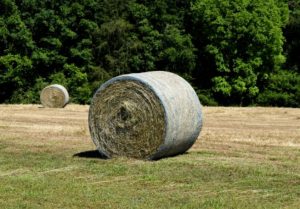A baler knows is an alternative term for a square or round bale twine. The process of tying a round baling twine onto a baler is quite simple and straightforward. You don’t need to think about it too much. However, we still feel the need to show it to people, especially those who aspire to become an agriculturist or farmer.
 Basically, if you remember the simple instructions of tying a knot, which is ‘right over left’ and ‘left over right,’ know that you’re doing it right. A finished baler knot has a round or square appearance. It tends to tighten as the ends pull tight due to pressure or the weight of your bales. That’s why farmers don’t have to worry about any potential loosening since it won’t happen with this simple knot.
Basically, if you remember the simple instructions of tying a knot, which is ‘right over left’ and ‘left over right,’ know that you’re doing it right. A finished baler knot has a round or square appearance. It tends to tighten as the ends pull tight due to pressure or the weight of your bales. That’s why farmers don’t have to worry about any potential loosening since it won’t happen with this simple knot.
The following steps will detail how you tie your square or round bale twine into a baler, which is a machine used to wrap bales into round or square shapes:
Step 1: Hold Both Ends of the Bale Twine
The first thing you should do when tying a knot is holding both ends of the twine. So that’s one end in one hand and the other end in the other hand. Make sure you have an excellent grip and to make sure you won’t drop your bale. If you do, you’ll have to repeat the entire process. So when tying a knot, also make sure that your hands are completely dry.
Step 2: Begin The Tying Process
Start by bending the left rope inward and holding it in place. Now, bend the right rope inward and over the top of the left rope. Use the right rope to wrap around and under the left. Finally, pull the two ends tight to create a simple criss-cross. This simple motion will form the knot that will tie your bales in place.
Step 3: Finish Things Off
Bend the right rope inwards and hold it in place. Bend the rope inward again and over the top of the left rope. Wrap the right rope around and under the left, before pulling the two tight to form another criss-cross that will not only create the knot but will also ensure a tight and durable hold.
Once you’ve finished this process, you now have a well-done knot that will ensure that your bales will stay in place and not fall out of the stacks. Learn more about how you can handle a square or round bale twine when you read through our other entries. Check out our blog page and expand your knowledge of baling twines.